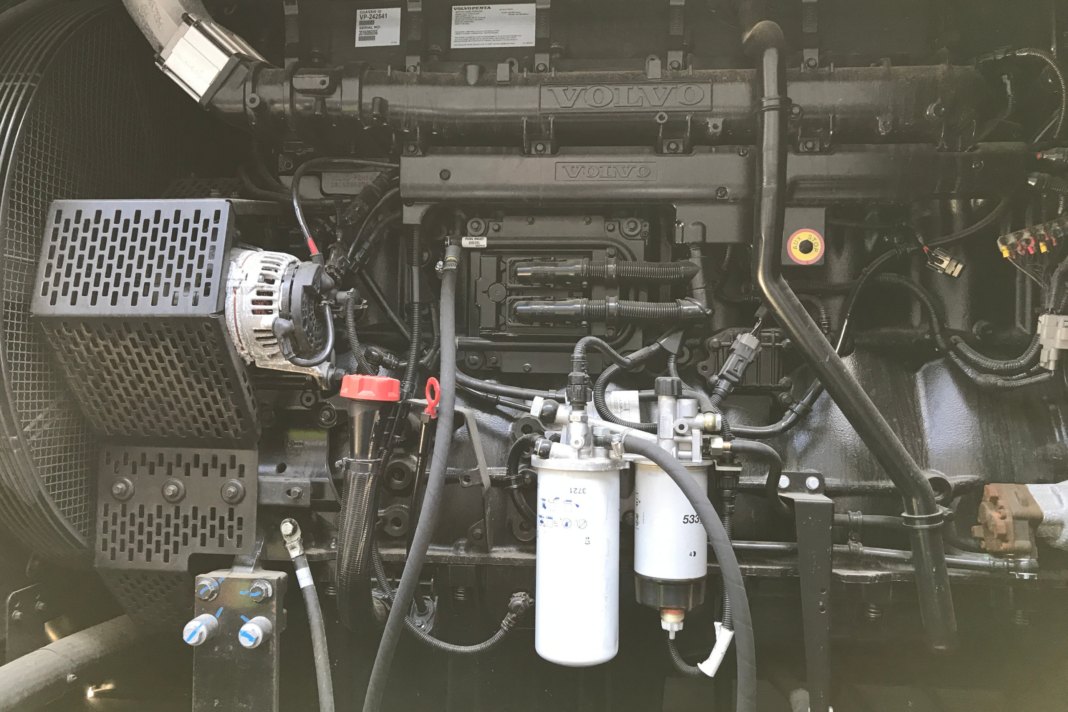What to look for when testing diesel fuel
In 2007, the EPA mandated that diesel fuel could no longer have a sulfur content greater than 15 ppm. This change has led to greater fuel instability and an increased opportunity for microbial growth if fuel is not used in a reasonable amount of time. If your application requires storing diesel fuel for extended periods of time, the fuel will need human intervention to keep it in a usable state. In this article, we will go over the most common tests that can be done to verify your fuel is stable and usable.
Ash Content
This test requires sacrificing a small sample of your fuel to be burned. The residue left over after all moisture has evaporated is then cooled and weighed to show the amount of ash that can be found in the sample. The lower the amount of ash leftover, the cleaner the fuel will burn in your engine. Fuel with high ash content can cause damage to your fuel injection system and can cause wear on engine components, such as piston rings.
Aromaticity
This measurement is arrived at by using an equation that factors in the density and viscosity of your fuel sample. The higher the aromatic content, the better inhibition of microbial growth you will have. On the flip side, fuel with levels of aromatics that are too high can produce harmful emissions and excess ash.
ATP Testing for Microbes
Adenosine Triphosphate testing gives you the number of microbes present in your fuel. If you have microbial growth, add biocide and manually circulate the fuel to ensure a complete kill. If you have sludge present, use sludge dispersant, followed by a fuel polishing routine to completely clean out the tank.
Carbon Residue
For this test, a small fuel sample is distilled until 90% of the sample is recovered. The residue is then heated to 1022 degrees Fahrenheit. Most of the sample then evaporates. The sample is cooled and the residue is then weighed to measure carbon levels. You do not want a high carbon residue level. This means that your fuel could cause combustion chamber deposits.
Cetane Index
Cetane index tests measure the “combustion quality” of diesel fuel. Having the right cetane rating in diesel fuel is essential for any diesel engine to run properly in cold weather. Inadequate cetane levels have significant detrimental effects on the engine – like rough and noisy operation and higher instances of smoke at startup. High cetane levels also make diesel engines difficult to start. If you receive a poor cetane rating, you can add a cetane improver to the fuel.
Cloud Point
This test involves a clean sample of fuel being examined periodically over time at descending temperatures. This test measures the temperature at which a haze can first be observed. The results of this test tell us the temperature at which wax crystals will precipitate out of the fuel. A poor cloud point measurement can indicate the higher incidence of plugged fuel filters or even possible engine shutdown if the fuel is used in your equipment.
Color
A sample of fuel is analyzed under a standardized light source. Colored glass discs are then compared to the fuel sample to assign a number for the fuel’s color. These numbers range from 0.5 (palest) to 8.0 (darkest). Dark fuel can hint at possible fuel instability.
Copper Strip Corrosion
A copper strip is placed in a sample of fuel for three hours at 122 degrees Fahrenheit. The quality of the metal is then compared to industry standards to see how corrosive the fuel is. If this test is failed, this can imply that the fuel may attack the metals used in fuel distribution and storage.
Density
This measurement is not a test, per say, but is a unit of volume calculated using the results from other standards such as distillation, aromaticity, and cetane number. If those tests are within normal limits, density will be as well.
Distillation
This test measures the combustion properties of fuel and ensures that it will burn properly in the engine. If the distillation curve of the fuel is off, the engine will run roughly, produce black smoke, or may not even run at all. If you get a bad distillation reading, the only remedy is to replace the fuel.
Flash Point
This measurement helps indicate the lowest temperature at which the application of an ignition source causes the vapors above the liquid to ignite. If the flash point is too low, it will prematurely ignite and damage the engine.
Lubricity
A steel ball passes over a steel plate, under load, for 75 minutes while immersed in the fuel sample. The size of the wear scar on the steel ball after 75 minutes is a measure of the fuel’s lubricity. Poor lubricity can predict the inability of the fuel to prevent premature wear of fuel injectors and pumps.
Oxidations Stability
A fuel sample is heated to 203 degrees Fahrenheit for 16 hours while oxygen is bubbled through the sample. At the end of the testing period, the sample is cooled and filtered to collect the insoluble material that formed. The adherent insoluble material is washed off with a trisolvent. The trisolvent is then evaporated to obtain the amount of adherent insoluble. This measures the ability of the fuel to resist sediment formation when exposed to oxidative stresses.
Sulfur Content
Sulfur content tests are done to make sure it does not exceed the legal limit. If the sulfur content is higher than 15 ppm, it puts you at risk of violating environmental laws. The only way to remedy this is to properly dispose of the fuel. High sulfur content can lead to regulatory fines if detected.
Thermal Stability
After filtration, samples are placed in tubes and aged for 90 and 180 minutes at 302 degrees Fahrenheit with air exposure. The samples are then cooled and filtered, and the insoluble material is then collected and measured. This measurement indicates how well fuel will resist sediment formation upon long term exposure to high temperatures.
Viscosity
This test measures the time required for a specific volume of the sample to flow through a capillary under gravity. The time measured is proportional to the kinematic viscosity of the sample. No. 2 diesel should have a viscosity between 1.9 and 4.1 mm2/S. This affects how efficiently fuel can be injected, which will affect emissions and engine performance.
Water & Sediment
This test documents the level of free water and sediment present in a fuel sample. An excessive level of either one indicates the fuel is unstable and more prone to microbial contamination. If you fail the water/sediment test, your fuel is probably unstable and may not be useable. It will burn poorly in the engine, create black smoke, and create harmful deposits in the engine and injectors. You can have your fuel polished and fuel tank cleaned to try and save the fuel from becoming completely useless, but this is a long shot.
Got More Generator Questions? We Can Help!
Call 800-595-5315 Or Connect With Our Expert Technicians Here:
Other Articles
- Critical Spare Planning


- Where Do I Start On My Generator Installation?


- How can Las Vegas heat lead to generator failures?





Lead Generator Technician
Graduated from Idaho State University with a degree in Heavy Duty Diesel and Onsite Power Generation. Damien is a master tinkerer and has been working on anything with a motor since he was about six years old. Besides being a generator fanatic, Damien is also an avid snowmobiler and aspiring world traveler.





Good post Damien. Inspecting and testing fuel for water is definitely an important factor amongst all of these, especially with the bad things that can happen from leaving water within fuel.